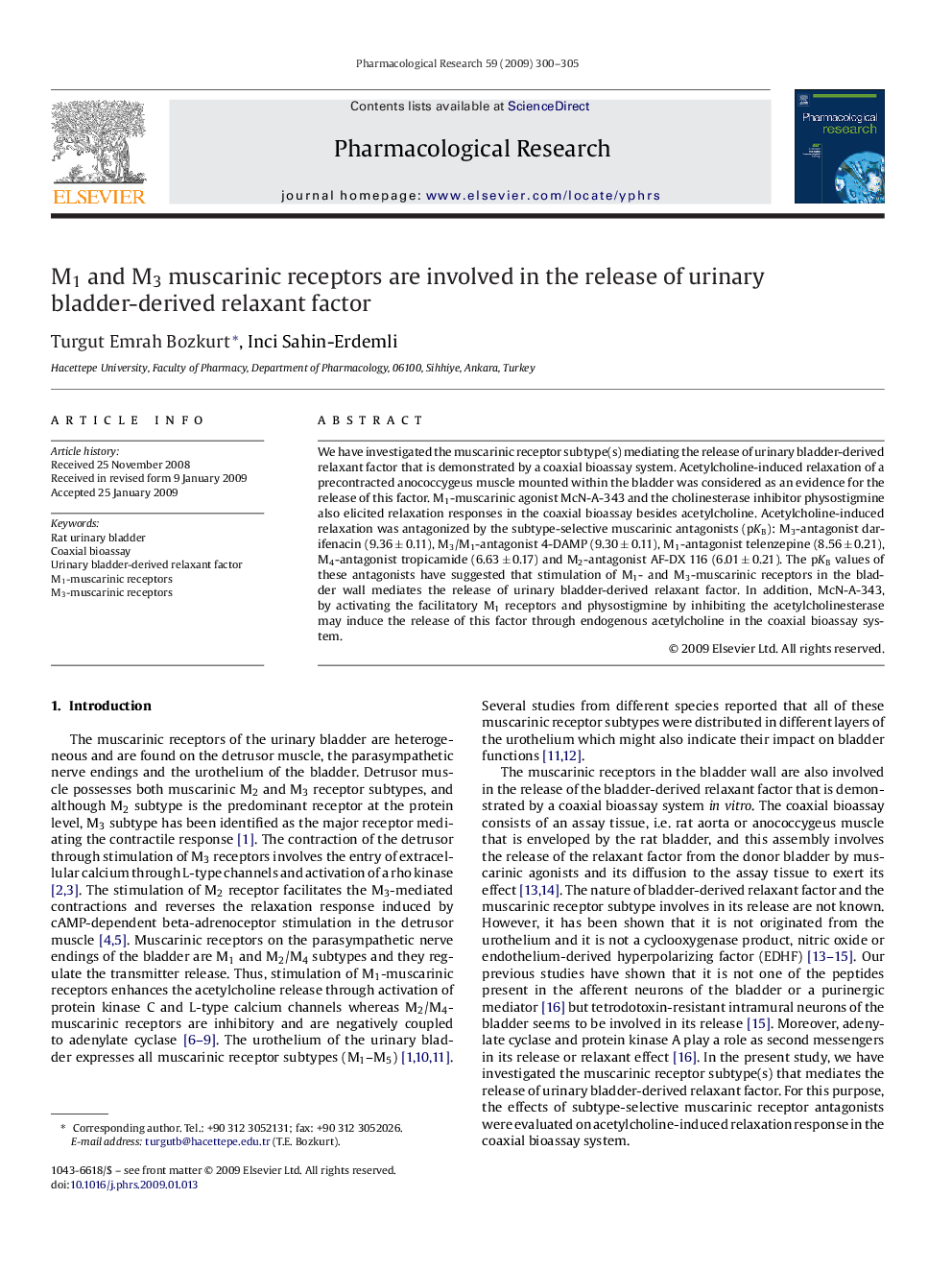| Article ID | Journal | Published Year | Pages | File Type |
|---|---|---|---|---|
| 2561409 | Pharmacological Research | 2009 | 6 Pages |
We have investigated the muscarinic receptor subtype(s) mediating the release of urinary bladder-derived relaxant factor that is demonstrated by a coaxial bioassay system. Acetylcholine-induced relaxation of a precontracted anococcygeus muscle mounted within the bladder was considered as an evidence for the release of this factor. M1-muscarinic agonist McN-A-343 and the cholinesterase inhibitor physostigmine also elicited relaxation responses in the coaxial bioassay besides acetylcholine. Acetylcholine-induced relaxation was antagonized by the subtype-selective muscarinic antagonists (pKB): M3-antagonist darifenacin (9.36 ± 0.11), M3/M1-antagonist 4-DAMP (9.30 ± 0.11), M1-antagonist telenzepine (8.56 ± 0.21), M4-antagonist tropicamide (6.63 ± 0.17) and M2-antagonist AF-DX 116 (6.01 ± 0.21). The pKB values of these antagonists have suggested that stimulation of M1- and M3-muscarinic receptors in the bladder wall mediates the release of urinary bladder-derived relaxant factor. In addition, McN-A-343, by activating the facilitatory M1 receptors and physostigmine by inhibiting the acetylcholinesterase may induce the release of this factor through endogenous acetylcholine in the coaxial bioassay system.
